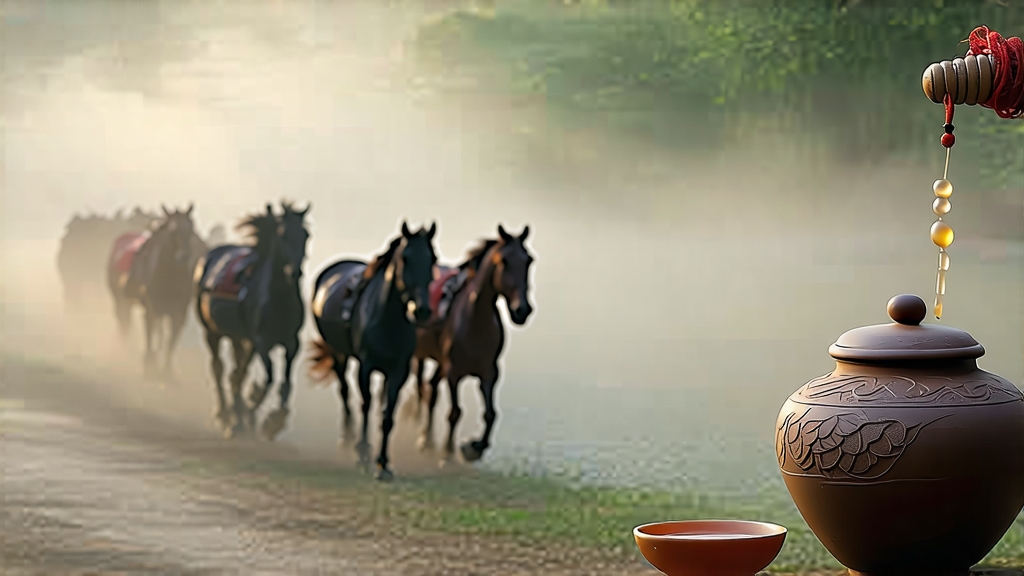
Liu Bao, literally “Six Forts,” is the name of a dark tea that even many Chinese tea lovers discover only after they have exhausted the more famous Pu-erh. Yet in the steamy, karst-wrapped valleys of southern Guangxi, Liu Bao has been the everyday elixir of dockworkers, scholars, and caravan drivers since the Ming dynasty. Its story begins in the small township of Liubao, Wuzhou City, where the confluence of the Xun and Gui rivers once formed the southern throat of the Maritime Silk Road. Jute sacks of compressed Liu Bao were loaded onto bamboo rafts, floated downriver to Guangzhou, then transferred to the holds of clipper ships bound for Hong Kong, Singapore, and eventually Malacca, where the tea was exchanged for spices that would later season European kitchens. The humid holds of these ships turned out to be accidental cellars; the tea arrived darker, smoother, and strangely more alive than when it left the pier. Merchants thought they had discovered a new commodity, but they had simply hastened what Liu Bao wants to do all along: keep changing.
Unlike the sun-dried shai qing mao cha that becomes sheng Pu-erh, Liu Bao starts with a leaf that is briefly yao qing—wilted over pine fires—then wok-killed while still supple. The moment that defines it, however, comes eighteen to thirty-six hours later when the pile is heaped half a meter high, covered in wet jute, and left to breathe its own heat. This “wet piling” (wo dui) predates the analogous step created in Yunnan during the 1970s by at least three centuries. Indigenous microbes—primarily Aspergillus niger, Blastobotrys adeninivorans, and a Guangxi-specific strain of Debaryomyces—feast on the leaf sugars, lowering the pH and turning the pile from olive to espresso brown. Masters judge the fermentation not by clock or thermometer but by sound: when the rustle of turning leaves softens to a muffled shuffle, the pile is broken down, steamed, and pressed into the traditional 40-kilo “big basket” (da lou) lined with bamboo bark. Here the tea will rest for months, years, or decades, continuing to inhale the microclimate of the storeroom. In old riverfront godowns the air is thick with the scent of betel nut, river mildew, and camphor, and those aromas become part of the tea’s passport.
Today Liu Bao is classified by both vintage and by the intensity of its wet pile. “Light pile” (qing wo) teas, fermented for roughly eighteen hours, retain a faint smokiness and a burgundy liquor that recalls Lapsang Souchong without the campfire. “Heavy pile” (zhong wo) lots, left for more than thirty hours, steep up coffee-black and deliver the famous “betel nut fragrance” (bin lang xiang), a sweet-herbal note that betrays the tea’s historical marriage to Southeast Asian chewing cultures. Connoisseurs further separate teas by basket size—mini 250-gram “tangerine baskets” (ju lou) age faster, while the grand 40-kilo baskets breathe more slowly, developing a lacquer-like sheen on their darkest leaves. The most sought-after vintages are the 1958 “Phoenix” (produced to commemorate the founding of the Guangxi Tea Import & Export Company) and the 1983 “Golden Ribbon,” identifiable by a single yellow bamboo strip woven into the basket rim.
Brewing Liu Bao is less a ceremony than a negotiation with a living archive. A Yixing teapot is traditional, but the tea is forgiving; a simple gaiwan or even a tempered glass jar will suffice. The key is to wake the leaf without scalding its microbes. Rinse once with water just off the boil, then steep the first infusion for only five seconds, pouring in a high, thin stream to aerate the liquor. The second infusion deepens to molasses, the third introduces a cooling camphor note at the back of the throat, and by the fifth the cup begins to taste like rainwater on old mahogany. If you have the patience for ten infusions, the tea will reward you with a ghost of dried longan and the slightest tremor of cacao. In Guangxi’s summer, locals cold-brew Liu Bao overnight in clay crocks, then drink it with salty pickled mango; the tea’s mellow acidity